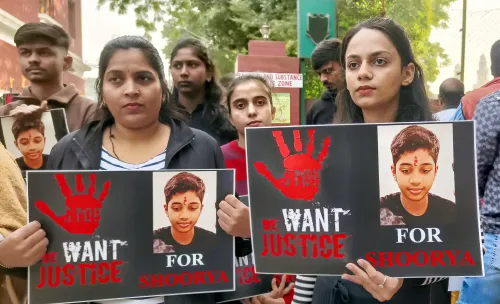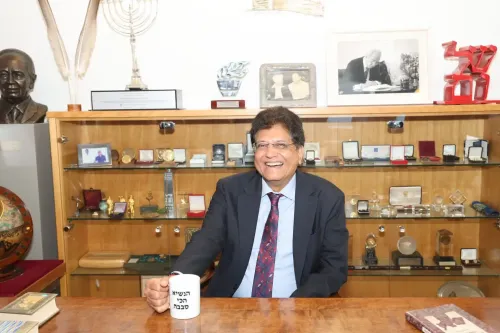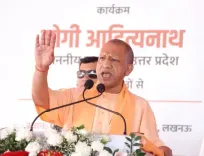How Does IITF 2025 Support Small Traders Economically?

Synopsis
Key Takeaways
- IITF 2025 is a vital hub for small traders and entrepreneurs.
- The fair facilitates connections between participants and bulk buyers.
- It supports the growth of grassroots businesses across India.
- Participating in IITF helps entrepreneurs understand market dynamics.
- The event aligns with India's vision for a self-reliant economy.
New Delhi, Nov 23 (NationPress) The Bharat Mandapam complex has evolved into a lively hub showcasing India's rich cultural and economic diversity as the 44th India International Trade Fair (IITF) 2025 attracts thousands of attendees. With the theme 'Ek Bharat, Shreshtha Bharat' and over 3,500 participants, this year's fair transcends conventional trade practices—becoming a vital economic support network for small traders, artisans, farmer-entrepreneurs, and novice business owners nationwide.
Launched on November 14, the fourteen-day event empowers first-generation entrepreneurs, rural artisans, and local brands to gauge market demand, connect with bulk buyers, and decipher consumer behavior. For numerous participants, IITF serves as an entry point into the national marketplace, embodying the spirit of a self-sufficient India as it gears up for Viksit Bharat 2047.
At the Bihar pavilion, 45-year-old first-time exhibitor Sridhi Kumari presents Bhagalpuri silk sarees and zari work crafted by artisans from Bihar and West Bengal. Thanks to the state’s women-entrepreneurship initiatives, she states that the fair is enhancing her understanding of market dynamics and broadening her outreach, following her recognition at a GI Mahotsav in March 2025.
Prahlad Ramrao Borgad, a farmer-turned-entrepreneur from Maharashtra’s Hingoli district, alongside his wife Kaveri, showcases organic pulses, spices, and pickles under their brand ‘Surya Farmers’. Supported by Self-Help Groups (SHGs) and the MSME department, Borgad asserts that platforms like IITF are instrumental in helping farmers acquire skills in branding, presentation, and customer engagement—capabilities they seldom encounter in rural settings.
According to Ramrao's estimates, his earnings from IITF are equivalent to four to five months of income, with additional orders continuing to pour in even after the fair concludes.
This year’s partner state, Jharkhand, showcases its tribal heritage with lacquer bangles created by Jhabar Mal, who has participated for several years. Although immediate sales are modest, he notes that loyal customers return annually and often place pre-orders. His craft supports nearly 400 Adivasi women affiliated with a rural cooperative in Jharkhand, highlighting how IITF sustains livelihoods beyond the fair.
The 2025 edition of IITF aligns with India’s growing global trade interactions, as ongoing Free Trade Agreements and policy backing empower micro and small enterprises.
As pavilions illuminate daily, IITF 2025 emphasizes that India's economic narrative is not solely driven by large industries but equally by resilient small entrepreneurs whose craftsmanship and innovation energize an interconnected marketplace.









